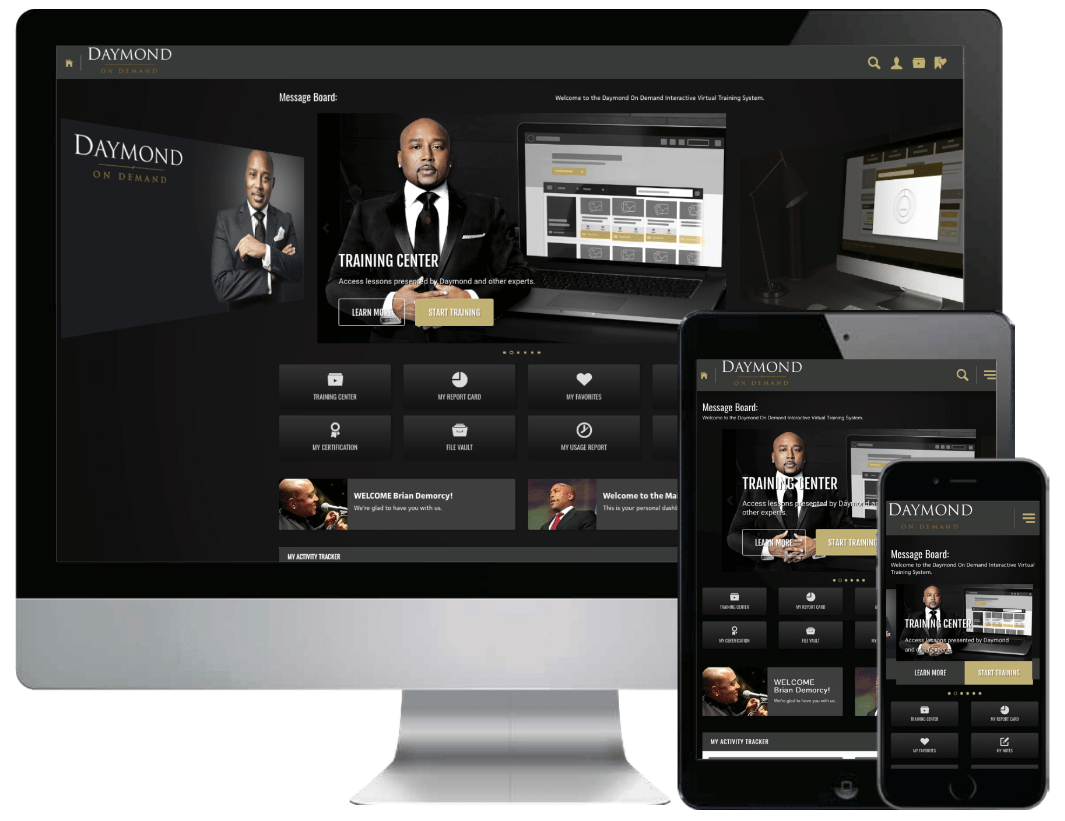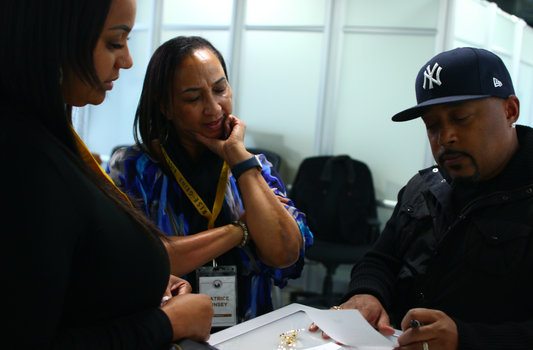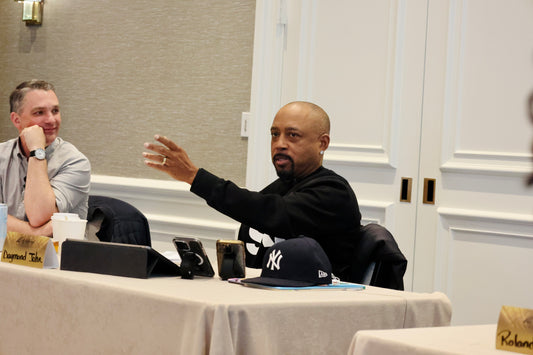The objective is collect insight, advice and strategy; Smart Business Magazine seeks Daymond John for helpful tips on investment opportunities.
Branding behind “Shark Tank” with Daymond John
by Brooke Bates
Imagine the pressure of pitching that big idea, but instead of standing in a typical boardroom, lights and cameras are pointed at you as you face a row of investment sharks – among them, Daymond John, founder and CEO of clothing brand FUBU. You’re probably nervous, but be careful – you’re being branded.
This is the scene on Shark Tank, ABC’s reality series – which starts its second season on March 25 – where entrepreneurs pitch ideas to investors like John and Mark Cuban. Before the entrepreneurs open their mouths, John is already looking for branding cues.
“The entrepreneurs are being branded themselves when they’re doing a pitch,” says John, who also formed a branding consultation called Shark Branding and wrote a book called The Brand Within. “We’re all branding each other every time we see each other.”
John shared some Shark Tank takeaways with Smart Business and discussed how social media is changing the branding landscape.
What tips can leaders take from Shark Tank?
When you’re negotiating, the person is always just as important as the number. We want to know the owner we’re dealing with because you’re going to have to be dealing with them way more than anything else. We never jump into anything. If you want to just coldly buy businesses, then go to the stock market.
[Getting to know people] comes in the due diligence process. When you set a conference call up for 1:30 and the person’s always late, the person has excuses – you start to see in your daily dealings with people how they really are.
What makes an investment opportunity appealing?
First of all, that there’s no surprises. You see that it’s scalable; it’s a business with all the right ingredients just needing funding and/or strategic partners.
More importantly, is the person a good person, where you’re like, ‘If this business does not necessarily create a huge revenue stream, I could see myself see doing other businesses with this person’? Someone with a patent always may have potential, given time, to take off because it’s proprietary.
This is not charity. This is my money, and it’s easy to say no when you either feel like the person is irresponsible, or you went down that lane with similar products or businesses in your past and it just didn’t work for you. It may not be that the product is a bad idea, but if I invested in Laundromats and I lost money, I’m just not going to be excited about it.
When does branding begin for entrepreneurs?
They say that a jury either convicts or exonerates somebody within the first 30 seconds of seeing them. After that, all they want to do is listen to what is going to prove them right in their assessment.
When the entrepreneurs have to stand there for that minute with those lights on them and none of us have to say anything as the cameras are getting set, if they’re fidgety and they don’t want to give eye contact, there’s this funny feeling people get. And we understand you can be nervous, you know, if you’re fidgeting and you’re smiling and you’re looking at people like, ‘Oh wow, this is scary,’ (but) you’ve got that little smile, that’s natural.
So branding starts there. Then talking about the product, do you have a clear, concise message? I always say the best brands, whether you personally or a business, can be summed up in three words. Whether it’s BMW: Fine German Engineering, TBS: Very Funny, TNT: We Know Drama, White Castle’s What You Crave, if it’s the Terminator, ‘I’ll be back.’ If you can summarize your whole business or personality in three words, then you live off that motto. If you and your staff don’t understand your message, why will anyone else understand it?
What else goes into personal branding?
You’re sitting across the table from a banker. The guy has on a pinstriped suit but it’s really loose, and he has a lot of jewelry on. Generally people don’t invest in bankers and accountants that look like that. Now, you could take the jewelry off and make the pinstriped suit really close-fitting to the body. That is how you’re assessing where you’re putting your financial nest egg: how they look, how they act, how they speak.
Somebody’s telling you they have all these great business ideas, and you look and they’ve got dirty fingernails and dusty shoes. I hate to sound so frivolous about things, but this is really what we do every day.
» Read the original article in Smart Business
















